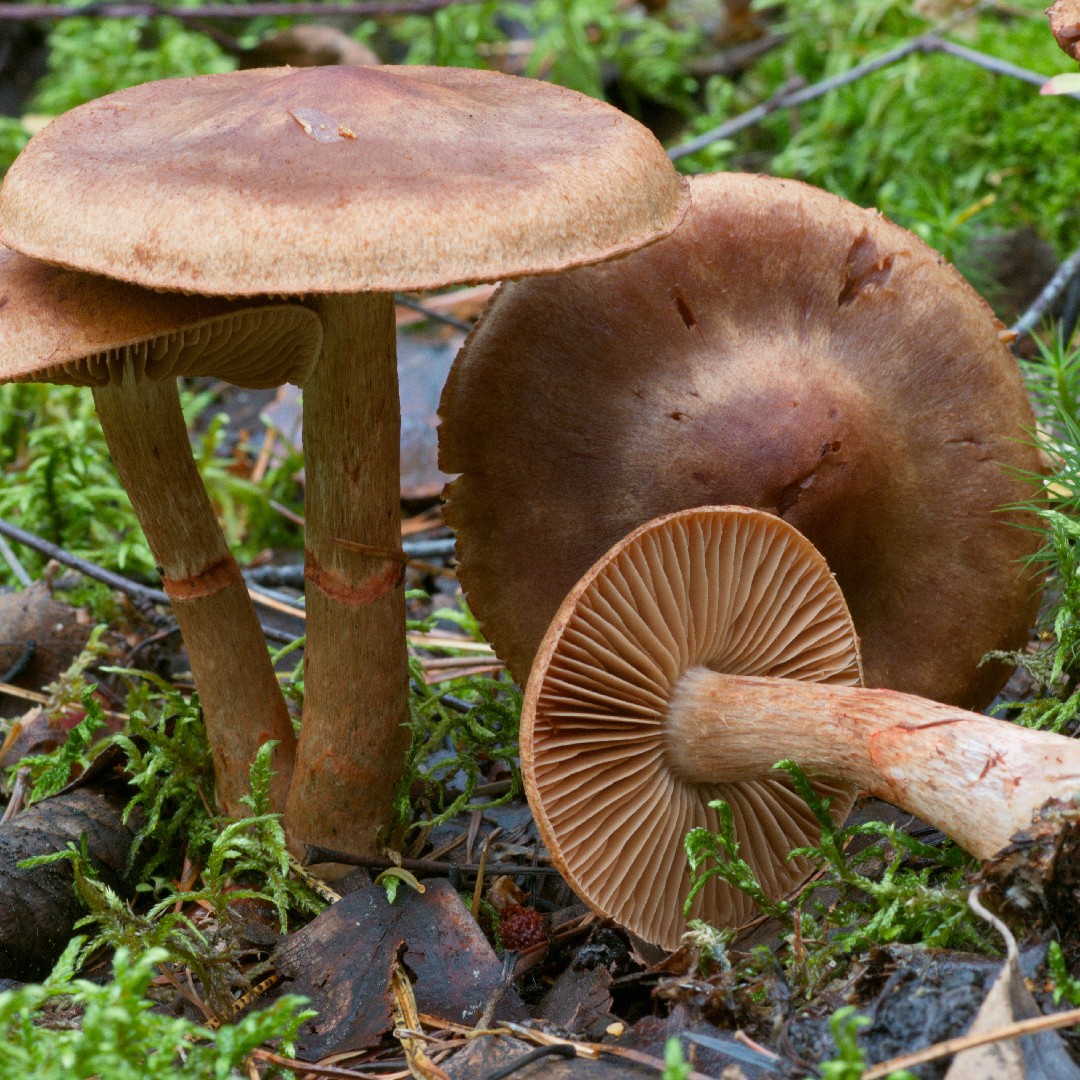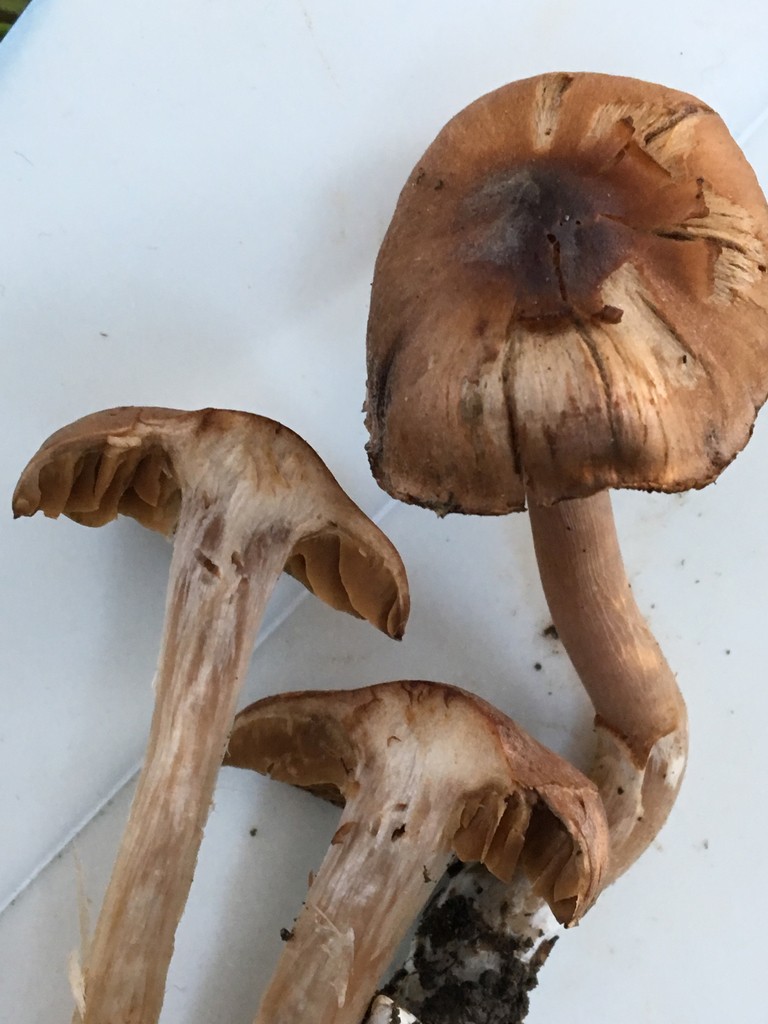Cortinariaceae
Scientific name: Cortinariaceae
Cortinariaceae
Scientific name: Cortinariaceae
 Photo By Tatiana Bulyonkova , used under CC-BY-SA-2.0 /Cropped and compressed from original
Photo By Tatiana Bulyonkova , used under CC-BY-SA-2.0 /Cropped and compressed from original Description
A good way to identify members of the cortinariaceae family is by looking at their web-like "cortina" of fibers underneath the mushroom cap. Many members of the family contain a toxin called "orellanine". These mushrooms are ground-growing and some develop symbiotic relationships with the roots of plants.
